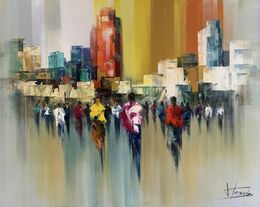
Colored artworks
The work of color is central in any artistic work. It is even one of the first tools of the artist. It is difficult to imagine a work that would exist without the working of color - even if it is the absence of color that the artist chooses to present.
Through the ages and artistic movements, the use and meaning attributed to color evolves, but the essence of color remains the same. Every artist must master the properties of color in order to control his composition. In the restoration of paintings, color even becomes a science, because it is necessary to know the different molecules to find the colors and mixtures originally used by the artist.
In the history of art, the importance of color fluctuates according to periods and geographical areas. During the Italian Renaissance, for example, there was a debate (called Paragone) between the authority of color versus drawing: according to the schools, it is the color, and not the line, that creates the emotion and visual power of a work of art. The colors thus take on an immense importance, and assume certain meanings: white symbolizes purity for example, and blue (systematically used to clothe the Virgin Mary) is associated with divinity. These symbols are not thought of randomly: the purple for example, is used since the Byzantine era to signify the highest rank of royalty. Unlike ochre, the purple pigment came from a specific shell, and was extremely difficult - and therefore rare, and expensive - to obtain.
More generally, colors can be divided into three categories: warm, cool, and neutral. As their name implies, these classes of colors give off an atmosphere that the painter can use to influence the emotion of his work. Baroque art, for example, manipulates the contrasts between warm and cold colors to capture the power of bodies. The play of light is exalted by the effects of color. For a long time, the traditional Western school of painting required painters to reproduce the colors of the environment around them. It was the Impressionists, in the 19th century, who explored other ways of seeing - and therefore of transcribing on canvas - their chromatic environment. By avoiding complex mixtures and painting spontaneously, in the open air, the Impressionists reinvented the use of color to reproduce reality.
It was not until abstract and subjective painting that art devoted itself to color as a subject. Mark Rothko, precursor of the Colorfield Painting movement and of abstract expressionism, sees in his paintings a living organism whose color is human and whose format is transcendent. Piet Mondrian, on the other hand, sought in his paintings to approach the very essence of nature through the purity of primary colors, to achieve abstraction. The founder of the Russian avant-garde movement of Suprematism, Kasimir Malevich, will disturb the senses of everyone with his work "White square on white background", in which the color is painted only for itself. Contemporary art, photography, collage, or pop art also use in their respective ways the resources of color, exploring indefinitely all its pluralities. As Picasso said, "When I have no blue, I use red."
Artsper writes art in color: discover below a great selection of works that honor color and its properties. What better way to brighten up an interior?
Save your search and find it in your favorites
Save your search to find it quickly
Saved search
Your search is accessible from the favorites tab > My favorite searches
Unsaved search
A problem occurred


La Place aux Herbes ( Série Souvenir Néo Cubiste )
Julien Raynaud
Painting - 81 x 100 x 4 cm Painting - 31.9 x 39.4 x 1.6 inch
€2,800

Cinque terre. Riomaggiore. Italie 2
Dominique Leroy
Photography - 60 x 80 x 1 cm Photography - 23.6 x 31.5 x 0.4 inch
€599
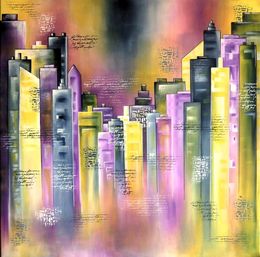
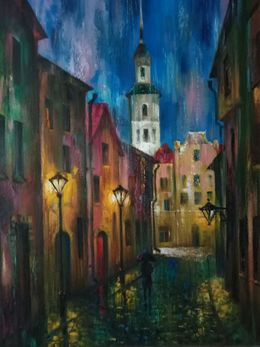
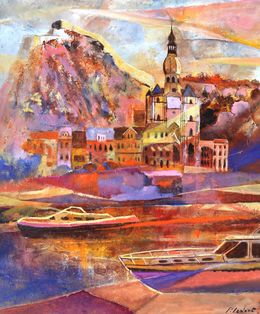
Dinant, a beautiful town in Belgium
Pol Ledent
Painting - 60 x 50 x 2 cm Painting - 23.6 x 19.7 x 0.8 inch
€750
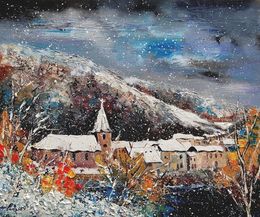
A tiny village in winter
Pol Ledent
Painting - 50 x 60 x 2 cm Painting - 19.7 x 23.6 x 0.8 inch
€700
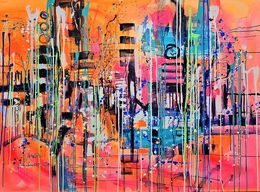
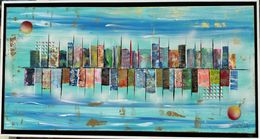

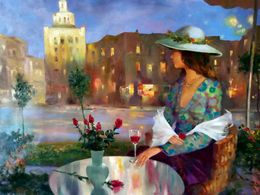

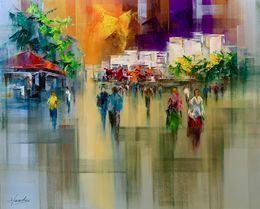
Disfrutando del paseo
Josep Teixido
Painting - 81 x 100 x 2 cm Painting - 31.9 x 39.4 x 0.8 inch
€3,800

Le marché de la côte
Christof Monnin
Painting - 116 x 89 x 2.5 cm Painting - 45.7 x 35 x 1 inch
€1,600

Rue Norvins Montmartre
Marie France Garrigues
Painting - 55 x 46 x 2 cm Painting - 21.7 x 18.1 x 0.8 inch
€650

Crépuscule aux Arènes 2
Raluca Vulcan
Painting - 80 x 100 x 2 cm Painting - 31.5 x 39.4 x 0.8 inch
€2,600



Chemiefabrik_007
Bernhard Lang
Photography - 80 x 120 x 0.3 cm Photography - 31.5 x 47.2 x 0.1 inch
€1,690
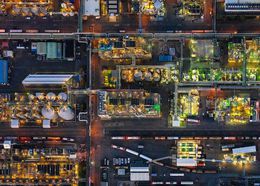
Chemiefabrik_005
Bernhard Lang
Photography - 85 x 120 x 0.3 cm Photography - 33.5 x 47.2 x 0.1 inch
€1,690

Le marché coloré en été
Christof Monnin
Painting - 116 x 89 x 2.5 cm Painting - 45.7 x 35 x 1 inch
€1,600
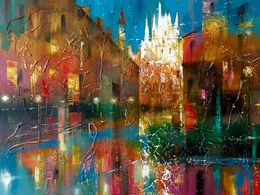
Night city lights
Anatoly Tarabanov
Painting - 70 x 90 x 2 cm Painting - 27.6 x 35.4 x 0.8 inch
€505

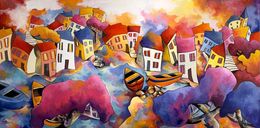
Marée basse
Martine Fauve Dechavanne
Painting - 100 x 200 x 2 cm Painting - 39.4 x 78.7 x 0.8 inch
€5,600

Douceur sauvage
Martine Fauve Dechavanne
Painting - 150 x 150 x 2.5 cm Painting - 59.1 x 59.1 x 1 inch
€6,300

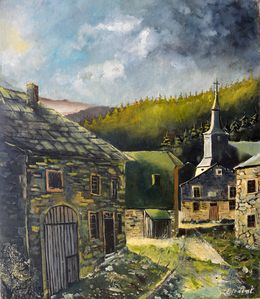
Old village in my countryside 67 Laforêt
Pol Ledent
Painting - 70 x 60 x 2 cm Painting - 27.6 x 23.6 x 0.8 inch
€900

4 CV Renault rouge
Sylvie Julkowski-Egard
Painting - 92 x 73 x 2 cm Painting - 36.2 x 28.7 x 0.8 inch
€1,500

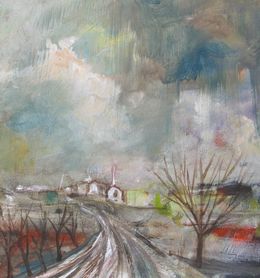

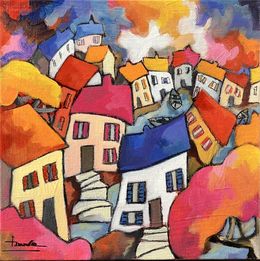
Promenade au bord de l'eau
Martine Fauve Dechavanne
Painting - 30 x 30 x 2 cm Painting - 11.8 x 11.8 x 0.8 inch
€380

Dépaysement
Martine Fauve Dechavanne
Painting - 30 x 30 x 2 cm Painting - 11.8 x 11.8 x 0.8 inch
€380



LA BAS MAGIE DE LA NUIT
Sophie Petetin
Painting - 70 x 70 x 2.5 cm Painting - 27.6 x 27.6 x 1 inch
€1,250 €1,125

La ruelle ensoleillée
Céline Dabot
Painting - 92 x 61.5 x 2 cm Painting - 36.2 x 24.2 x 0.8 inch
€1,050
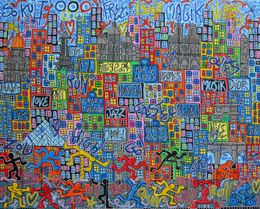
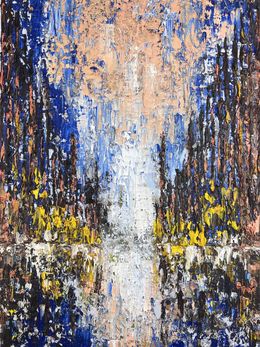
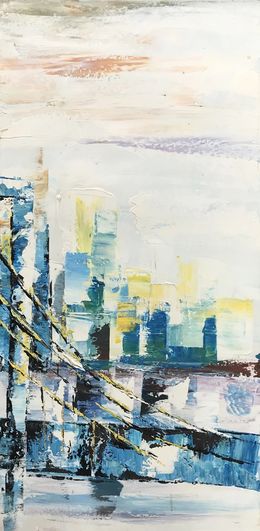
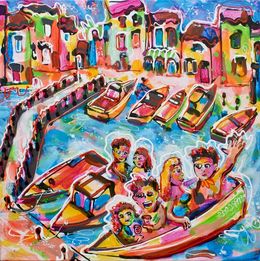

Une vue superbe
Martine Fauve Dechavanne
Painting - 60 x 20 x 2 cm Painting - 23.6 x 7.9 x 0.8 inch
€490

Bateau à Istanbul et pêcheurs. Matin
Alexei Lantsev
Painting - 80 x 100 x 2 cm Painting - 31.5 x 39.4 x 0.8 inch
€3,300
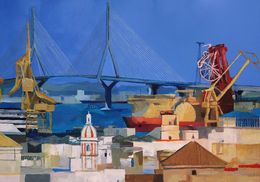
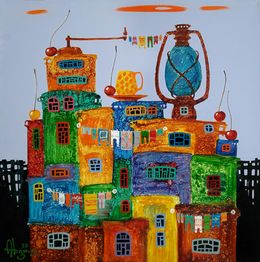
Childhood dreams-62
Abgar Khachatryan
Painting - 60 x 60 x 2 cm Painting - 23.6 x 23.6 x 0.8 inch
€686 €549
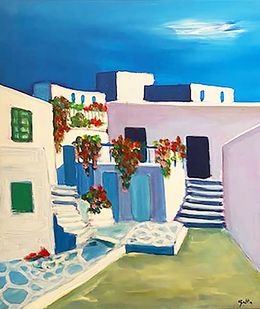


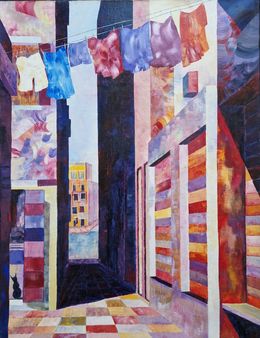
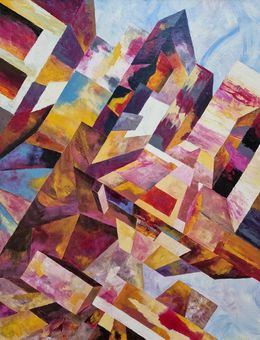
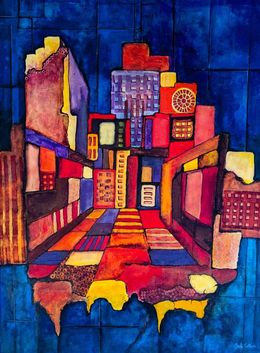
Erosion in Time Square
Sophie Cottin
Painting - 73 x 54 x 2 cm Painting - 28.7 x 21.3 x 0.8 inch
€680
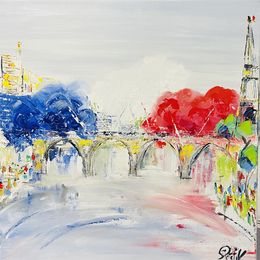
Paris J.O souvenirs
Sophie Petetin
Painting - 60 x 60 x 2.5 cm Painting - 23.6 x 23.6 x 1 inch
€1,250

Drapeau tibétain
Dominique Leroy
Photography - 60 x 90 x 2 cm Photography - 23.6 x 35.4 x 0.8 inch
€1,100

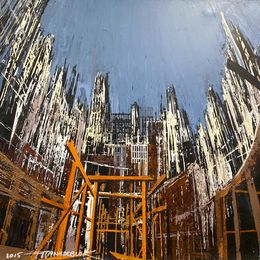
Chantier dans une Ville Gothique
Frank De Blok
Painting - 70 x 70 x 2 cm Painting - 27.6 x 27.6 x 0.8 inch
€800
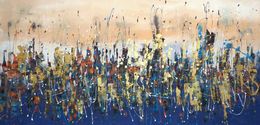

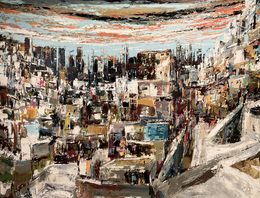
Favélas et Compagnie
Frank De Blok
Painting - 80 x 100 x 2 cm Painting - 31.5 x 39.4 x 0.8 inch
€1,800

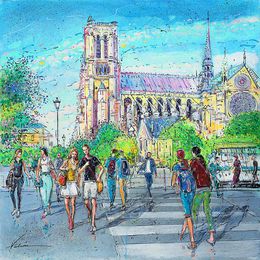

Coccinelle vert bronze
Sylvie Julkowski-Egard
Painting - 92 x 73 x 2 cm Painting - 36.2 x 28.7 x 0.8 inch
€1,500
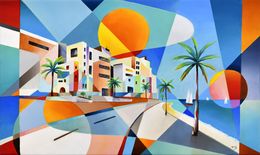

Piazza venezia Roma
Maciej Zaborowski
Painting - 47 x 59 x 1 cm Painting - 18.5 x 23.2 x 0.4 inch
€2,000

Tout là haut
Martine Fauve Dechavanne
Painting - 20 x 20 x 2 cm Painting - 7.9 x 7.9 x 0.8 inch
€280



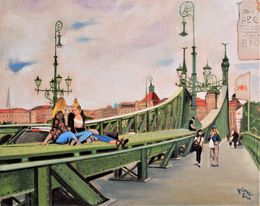
N° 1080 Budapest 2. Széchenyi Lànchid A.
R. Cavalié
Painting - 40 x 50 x 2 cm Painting - 15.7 x 19.7 x 0.8 inch
€380
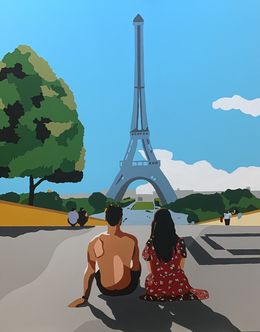
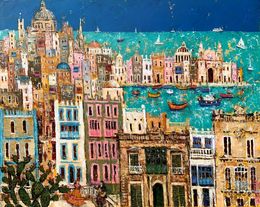
Balconies of Valletta, Malta
Ellie Hesse
Painting - 80 x 100 x 5 cm Painting - 31.5 x 39.4 x 2 inch
€3,716
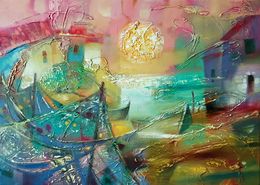
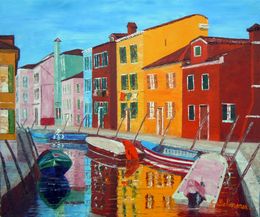
Canal de Burano
Gyslaine Pachet-Micheneau
Painting - 46 x 55 x 2 cm Painting - 18.1 x 21.7 x 0.8 inch
€780


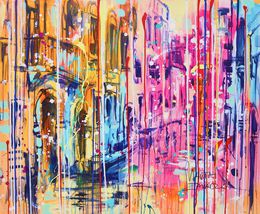

MANHATTAN ENCORE UN TOUR SUR LE QUAI
Sophie Petetin
Painting - 60 x 81 x 2.5 cm Painting - 23.6 x 31.9 x 1 inch
€895

HANOÏ LA RUE EST UN VOYAGE
Sophie Petetin
Painting - 54 x 65 x 4 cm Painting - 21.3 x 25.6 x 1.6 inch
€895
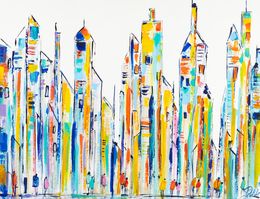
Manhattan on fait un petit tour
Sophie Petetin
Painting - 89 x 116 x 2.5 cm Painting - 35 x 45.7 x 1 inch
€1,790
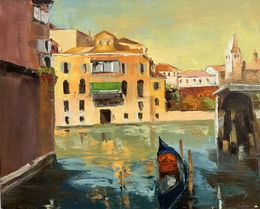

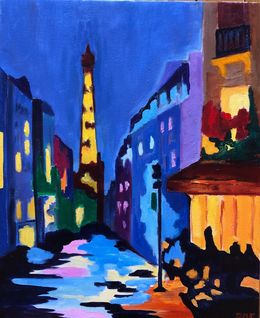
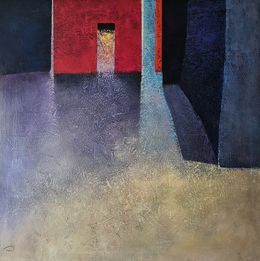


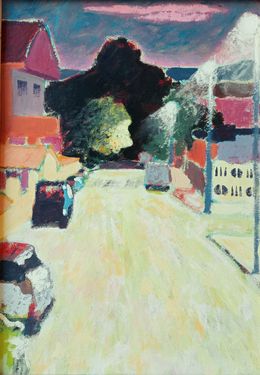
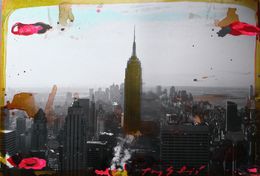
New York, peinture sur Dibbon
Tony Soulié
Painting - 60 x 90 x 3 cm Painting - 23.6 x 35.4 x 1.2 inch
€4,500
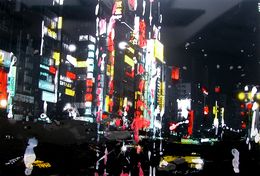
Tokyo by night, peinture sur Dibbon
Tony Soulié
Painting - 60 x 90 x 3 cm Painting - 23.6 x 35.4 x 1.2 inch
€4,500

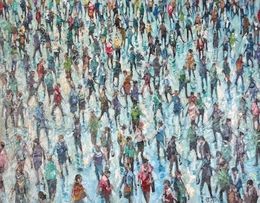

A walk through time
Stanislav Lazarov
Painting - 80 x 120 x 3 cm Painting - 31.5 x 47.2 x 1.2 inch
€1,400

Street in Paris 2
Shengqi Tang
Photography - 30 x 20 x 1 cm Photography - 11.8 x 7.9 x 0.4 inch
€650
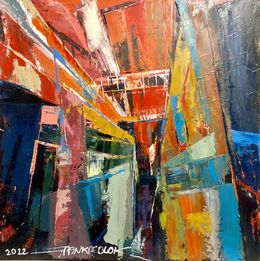
Frankcolor 2022 - Zone Industrielle en rouge
Frank De Blok
Painting - 60 x 60 x 2 cm Painting - 23.6 x 23.6 x 0.8 inch
€990
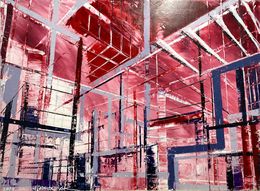
Structure Architecturale en rouge
Frank De Blok
Painting - 60 x 80 x 2 cm Painting - 23.6 x 31.5 x 0.8 inch
€1,100